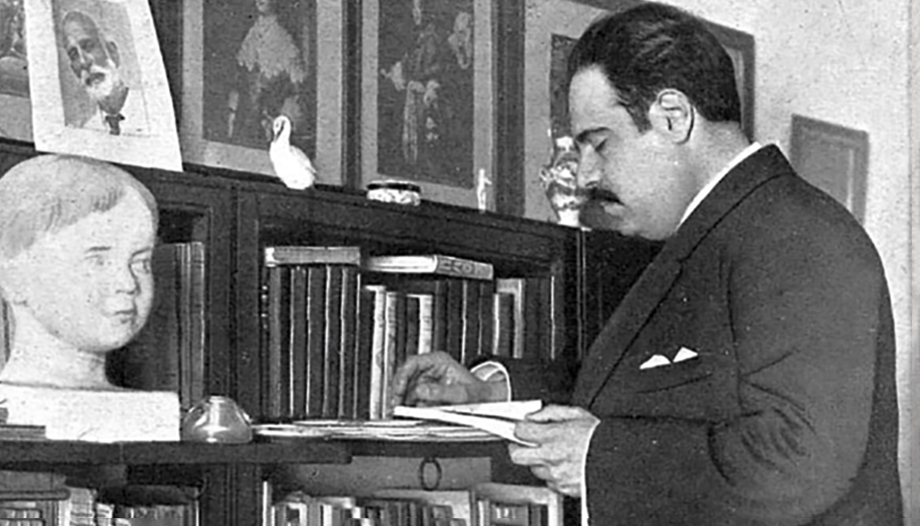It has been 100 years since the appearance of Three hours at the Prado Museumprobably the most famous book by the Spanish philosopher Eugenio d'Ors. As usual in d'Ors, this book was first a collection of glosses, which appeared in the section The works and the days of the newspaper The News of Barcelona between May 10 and August 13, 1922.
Rafael Caro Raggio published it in book form the following year as a second edition, and since then it has been reprinted thirty times, which gives an idea of its relevance. In 1927 it was translated into French and, as d'Ors' biographer, Enric Jardí, states, "the author's fame transcended beyond our frontiers with his French version".
The book
Although it may seem, at first glance, a book of art criticism, it is one of those typical pirouettes of the Catalan thinker, in which, using a tour of the museum, he elevates us to a review of the history of art and, in an even greater leap, to a theory of art, to an "aeonic" conception of art, to an "aeonic" conception of art." of art. It elevates us from anecdote to category, and what seems like a simple guide to visit the Prado Museum becomes, almost without realizing it, a formidable aesthetic theory.
For d'Ors, in every work of art there are present, in different proportions, two values of opposite sign: the spatial value and the expressive value. The first tends towards "sculpturalization"." of the work of art, it makes the works heavy; the second elevates them towards a "musification" making them fly. If this expressive value is a tendency to impulse, to pure significance, its opposite seeks balance, eternity.
Depending on whether one tendency or the other prevails in a work, we will find ourselves before a classical work of art or a baroque work -in the sense that d'Ors gives to these words: we are not dealing with mere artistic styles typical of a specific moment in history, but with deeper, eternal constants, which he calls "eons"."The baroque is a baroque that is manifested throughout all periods and styles; there is, therefore, a romantic baroque, a gothic baroque, a modernist baroque... -.
Tour of the paintings
D'Ors begins his journey through the classical extreme, through the paintings in which corporeality triumphs over expressiveness: Poussin, Claudio Lorena, Andrea del Sarto, Mantegna. Alongside these "rationalist" painters"d'Ors places Raphael, who has introduced the eternal feminine into his art, thus opening the space to lyricism, to feeling. Even more lyrical is Correggio, whom he calls "antechamber of baroque"..
However, in the middle ground between painting-sculpture and painting-music is Velázquez, the painting-painting, "like a crystal over the world". Immediately before Velázquez's realism are the primitives: Fra Angelico, Jan van Eyck, Rogier van der Weyden, Petrus Christus, Memling, Berruguete, Morales, Juan de Juanes and the second generation of primitives, Bosch, Patinir, Brueghel the Elder, who approach from classical idealism to realism, that is, in the line that goes towards the romantic, but still far away.
From "equidistant" realism" From Velázquez begins a line that continues through the Spanish masters -Zurbarán, Murillo, Ribera-, the Venetian school -Bellini, Giorgione, Palma, Tiziano, Tintoretto, Veronese-, the Germanic painters -quintaesenciados in Durero-, the Flemish -Rubens, van Dyck, Jordaens- and Dutch -Rembrandt, Vermeer-, all of them already very close to pure romanticism, to the art of the forms that fly.
At the extreme of expressiveness, lyricism, musicality, in the world of flying forms, are the romanticism of Goya, El Greco, or impressionism.
More than art theory
This scheme, which d'Ors illustrates by stopping before each painting and showing the prevalence of one or the other value, is connected with formalist aesthetics and, even more, with the classical roots of aesthetics -Baumgarten, Winckelmann and Lessing and their debate on the Laocoön, "..." (d'Ors, "The Laocoon").la querelle des anciens et des modernes".Kant's or Schiller's theses.
The genius of Eugenio d'Ors is that he does not "theorize"."In the worst sense of the word, he does not limit himself to criticizing works of art. Through his accurate, acerbic commentary, he elevates the reader -and the visitor to the Prado- to an esthetic theory that, beyond its validity or error, elevates the spirit, ignites the sensibility and allows us to enter into the beauty of artistic creation.
From the penetrating comments of Eugenio d'Ors, we have selected one on the Christ crucified by Velázquez: "It means a supreme dignity. Precisely because of its sobriety, its humanity, its admirable double absence of beauty and physical ugliness. This body is not ugly, as in El Greco. Nor is it beautiful, as in Goya.
He is neither an athlete, as in Michelangelo, nor a larva, as in some primitives. He is noble: that is all. He has no face, which the hair hides. He has no blood with which to water compassion romantically. It has no human company to make visions in which passions are portrayed. No landscape, no sky, no spectacular meteors and prodigies. He was a righteous man; he is dead. And -supreme dignity!- he is alone.".
One hundred years after its original publication, the reading of Three hours at the Prado Museum continues to challenge the reader and invites, of course, to a new visit to the museum, which has grown and improved so much over the years. We need to let ourselves be filled by the beauty so carefully preserved in this marvelous space.












